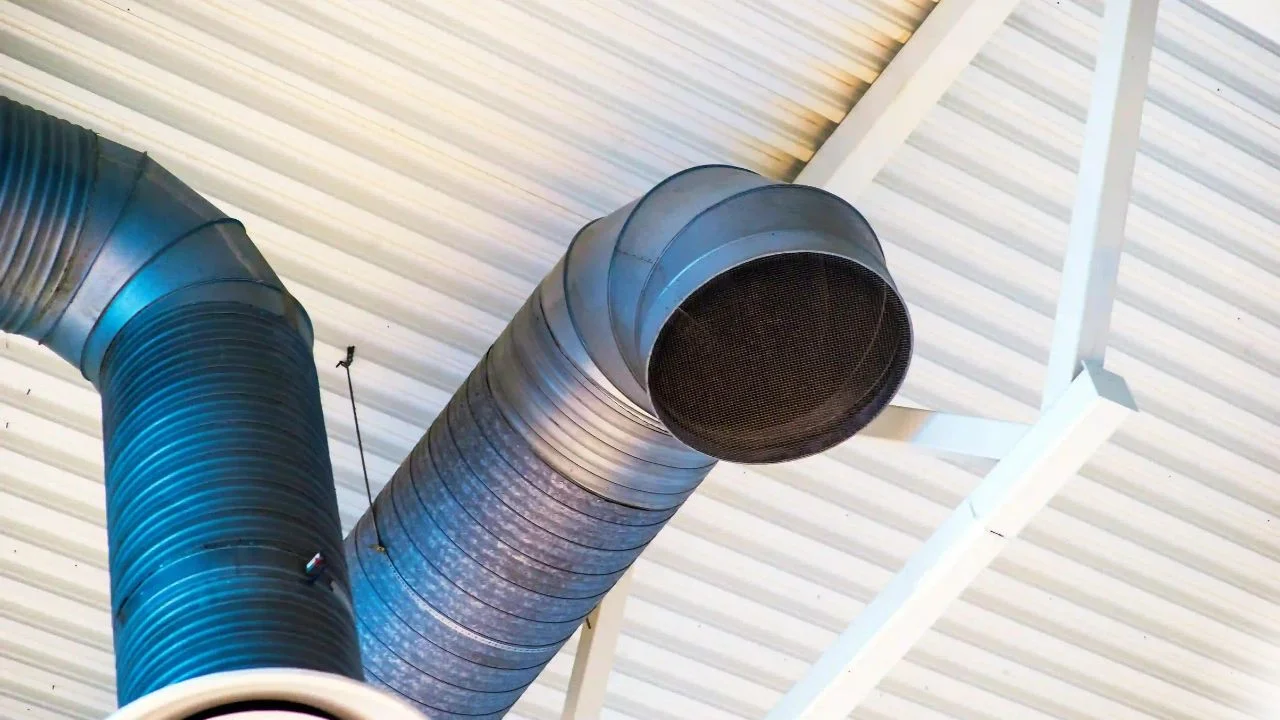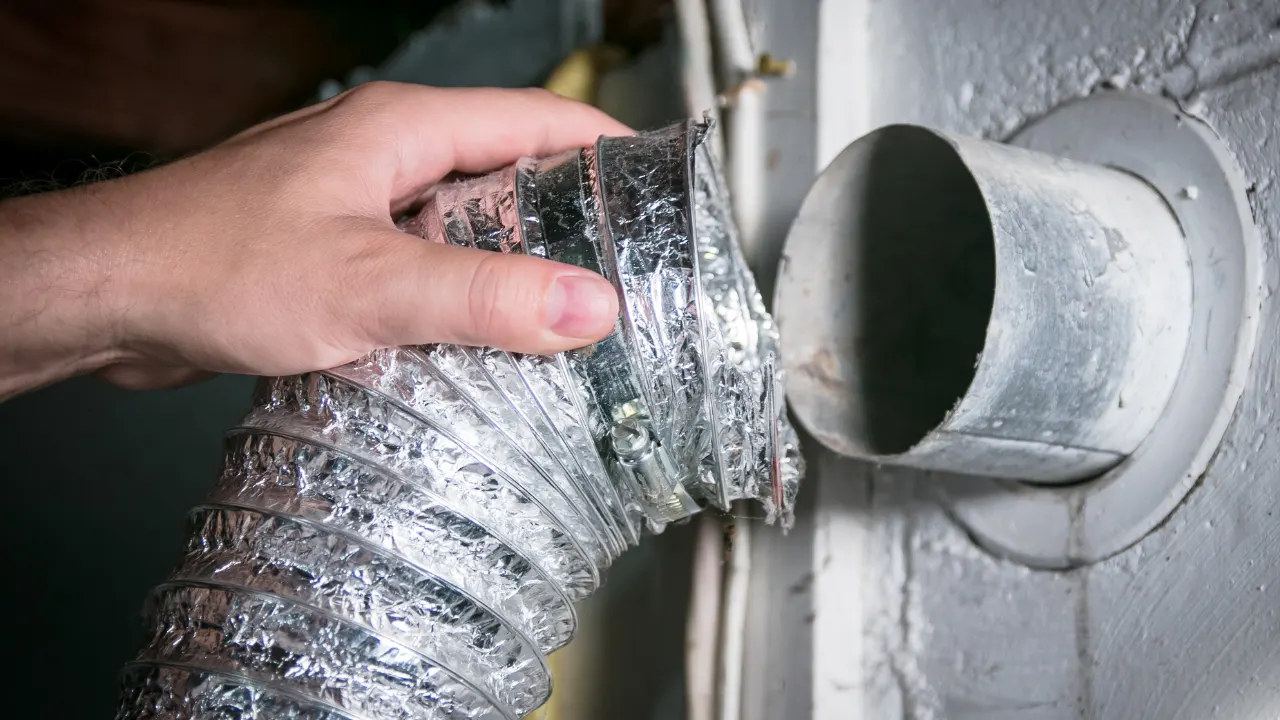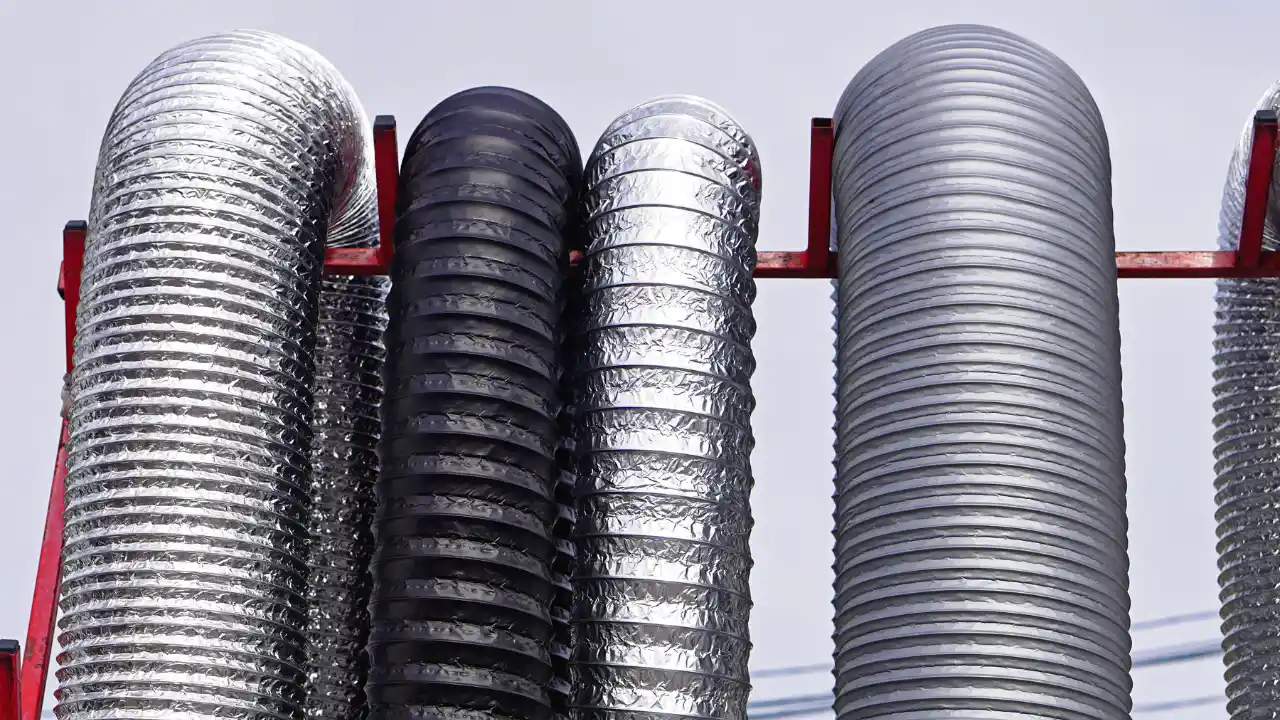Have you ever wondered how that cool air gets from your AC unit to that stuffy room upstairs? The answer lies in a network of tunnels called ducts. But these aren’t your average tunnels – they’re specially designed to move air throughout your house efficiently. Traditionally, ducts are made of rigid metal, but in recent times, a more flexible option has emerged: the flexible duct.
So, can you use a flexible duct for the HVAC system? Yes, you can use flexible ducts for HVAC systems, but it depends on factors like —
- your budget,
- installation preferences,
- existing duct design,
- and home layout.
Let’s get into the details of this topic further.
Flexible Ducts

Flexible duct, also known as flex duct, is a type of ductwork that is designed to be easily bent and maneuvered around obstacles. It’s typically used in HVAC systems (heating, ventilation, and air conditioning) to connect air handlers to vents in residential and commercial buildings.
Flexible duct is made from a variety of materials, including:
- Aluminum foil
- Plastic
- Metal coil
- Fiberglass insulation
The inner layer of the duct is usually made of a smooth, non-porous material to minimize friction and allow for easy airflow. The outer layer is often made of a durable material that can withstand wear and tear.
Pros of Flexible Ducts
- Easy Installation: Flex duct installation is relatively easier to install than rigid ductwork. Their flexibility allows them to maneuver through tight spaces and around obstacles, saving time and effort during installation.
- Cost-Effective: Flexible ducts are often more affordable than rigid ductwork. It is a budget-friendly option for HVAC systems.
- Versatility: They can be used in various HVAC applications, including residential and commercial buildings, and can adapt to different layouts and configurations.
- Noiseless: Flexible ducts are quieter than metal ones. You won’t hear the air moving around your house as much. This is because of how they’re made.
- Pre-Insulated: Most flexible ducts come already insulated, which helps keep the air at the desired temperature as it travels through the ductwork. This can lead to better energy efficiency for your HVAC system.
Cons of Flexible Ducts

- Airflow Restrictions: Flexible ducts can sometimes restrict airflow due to their corrugated design. This can minimize the efficiency of your HVAC system and lead to uneven heating or cooling throughout your space.
- Durability Concerns: While flexible ducts are durable, they may not last as long as rigid ductwork. They can be prone to damage if not handled carefully during installation or maintenance.
- Condensation Issues: In humid environments, condensation can form inside flexible ducts. If not properly insulated, this can lead to mold growth and potential air quality issues.
- Not Ideal for All Systems: High-pressure systems, such as those used with furnaces, can easily crush flexible ducts. They’re generally better suited for low-pressure systems like air conditioners.
Check out our informative blog to get the right answer to your question: “How long does it take to replace an HVAC system?”
So, Can You Use a Flexible Duct for HVAC?
Ultimately, the decision of whether to use flexible ducts depends on your specific situation. Here are some factors to weigh:
- Your Duct System Layout: If your ductwork needs to navigate a lot of bends and tight spaces, flexible ducts might be a good choice.
- Your HVAC System Type: Consult a professional to ensure flexible ducts are compatible with your furnace or air conditioner.
- Your Budget: Flexible ducts cost a lot less than regular ones, up to 75% less! However, you should always factor in the cost of proper installation.
- If Your Home Already Has Flexible Ducts: Stick with what you’ve got!
- If Your Home has Tricky Spaces: Flexible ducts are better for homes with weird layouts or hard-to-reach areas.
Pro Tip: Always consult a qualified HVAC technician before making any changes to your duct system. They can measure your needs, recommend the right type of duct (flexible or rigid), and ensure proper installation for optimal airflow and efficiency.
Visit our informative blog to learn, “How often should you have your AC serviced?”
Contact a Pro
Are you looking for HVAC services in Houston, TX? Choose Steam Express for installation, repair, and maintenance. From fixing tricky furnace issues to ensuring even heating and cooling, our expert technicians are here to help.
Get top-notch HVAC cleaning and a free estimate. Our process is simple for new installations, and repairs are quick. Regular maintenance is vital for safety and efficiency, and our expert technicians handle it.
Experience smooth operations with our HVAC services. Contact us at 832-479-6562 for fast and effective solutions to maintain your home’s comfort.
Wrapping Up
In short, flexible ducts offer a viable option for HVAC systems, providing benefits such as ease of installation, cost-effectiveness, and efficiency. However, it’s crucial to measure the pros and cons carefully and consider factors like budget, installation preferences, and home layout before making a decision. So, when asking, “Can You Use a Flexible Duct for HVAC?” the answer is yes, but with careful consideration of your specific needs and circumstances.
FAQs
Can I install flexible ducts myself?
While possible, DIY duct installation is not recommended. Improper installation can lead to airflow issues, reduced efficiency, and even system damage. Consulting a certified HVAC technician ensures proper sizing, placement, and sealing for optimal performance.
How long do flexible ducts last?
The lifespan of flexible ducts depends on the material, quality, and installation. Typically, they can last 10-15 years with proper care and maintenance.
How do I clean flexible ducts?
Most flexible ducts aren’t designed for internal cleaning. However, you can sustain them by regularly cleaning the vents and replacing air filters to prevent dust buildup within the duct system.
What safety precautions should be taken when using flexible ducts?
- Avoid crushing or kinking the ducts during installation.
- Maintain proper clearances around the ducts to prevent heat buildup.
- Don’t expose flexible ducts to direct sunlight or sharp objects.
Is there a maximum distance flexible ducts can be used?
Yes, there are limitations on the length of flexible ducts due to airflow resistance. A qualified HVAC technician can determine the appropriate length based on your system and needs.
Are there any environmental benefits to using flexible ducts?
Pre-insulated flexible ducts can help improve energy efficiency by minimizing heat loss during air distribution. This process can potentially lead to lower energy consumption and reduced environmental impact.


